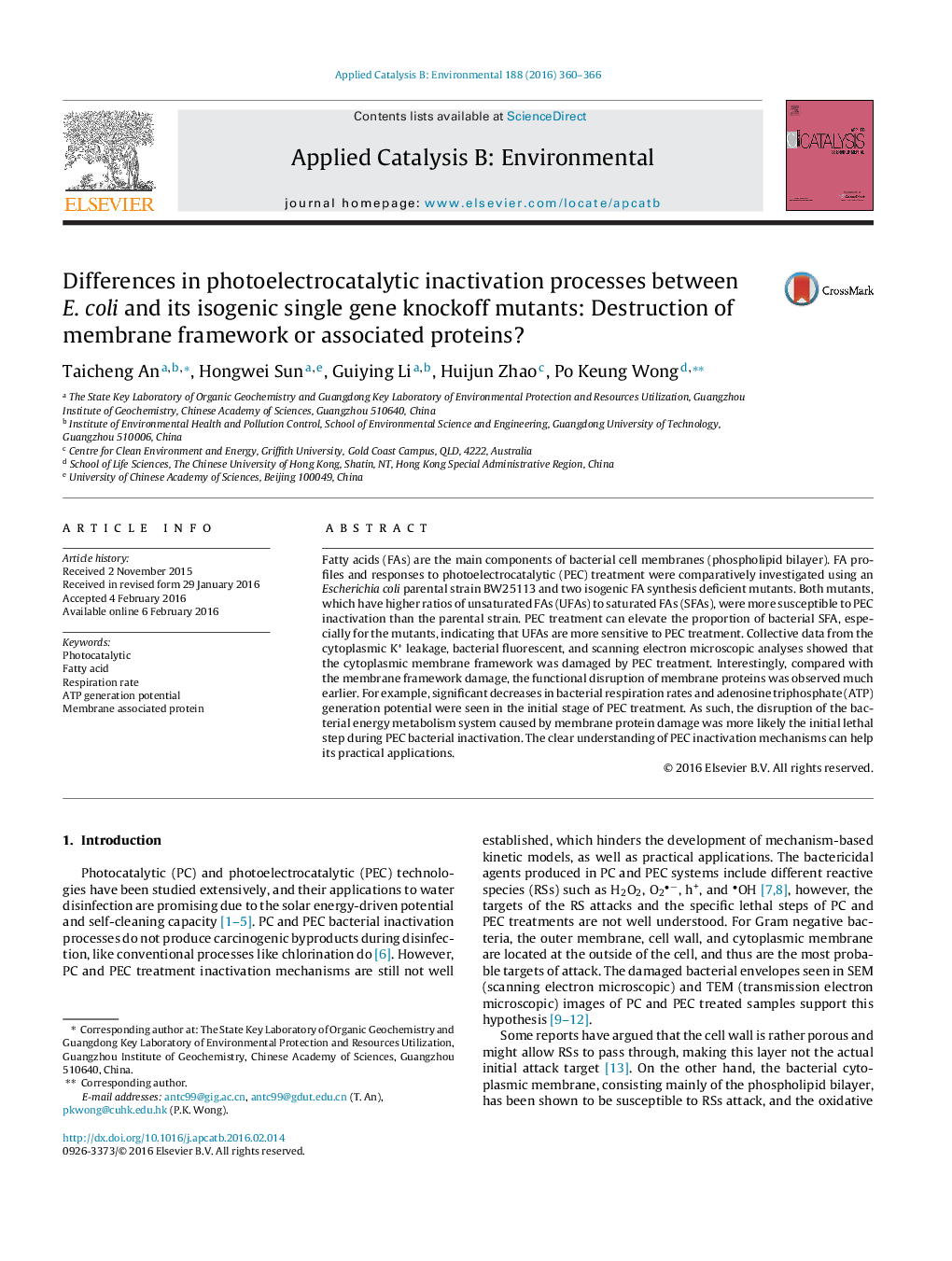| Article ID | Journal | Published Year | Pages | File Type |
|---|---|---|---|---|
| 45028 | Applied Catalysis B: Environmental | 2016 | 7 Pages |
•Bacterial membrane proteins disruption was the lethal step in PEC inactivation.•Membrane framework (phospholipids) damage was less important.•Parental E. coli and isogenic mutants were adopted in PEC inactivation study.
Fatty acids (FAs) are the main components of bacterial cell membranes (phospholipid bilayer). FA profiles and responses to photoelectrocatalytic (PEC) treatment were comparatively investigated using an Escherichia coli parental strain BW25113 and two isogenic FA synthesis deficient mutants. Both mutants, which have higher ratios of unsaturated FAs (UFAs) to saturated FAs (SFAs), were more susceptible to PEC inactivation than the parental strain. PEC treatment can elevate the proportion of bacterial SFA, especially for the mutants, indicating that UFAs are more sensitive to PEC treatment. Collective data from the cytoplasmic K+ leakage, bacterial fluorescent, and scanning electron microscopic analyses showed that the cytoplasmic membrane framework was damaged by PEC treatment. Interestingly, compared with the membrane framework damage, the functional disruption of membrane proteins was observed much earlier. For example, significant decreases in bacterial respiration rates and adenosine triphosphate (ATP) generation potential were seen in the initial stage of PEC treatment. As such, the disruption of the bacterial energy metabolism system caused by membrane protein damage was more likely the initial lethal step during PEC bacterial inactivation. The clear understanding of PEC inactivation mechanisms can help its practical applications.
Graphical abstractFigure optionsDownload full-size imageDownload as PowerPoint slide
